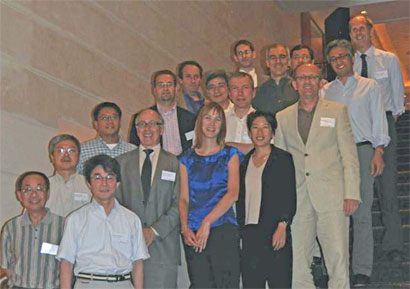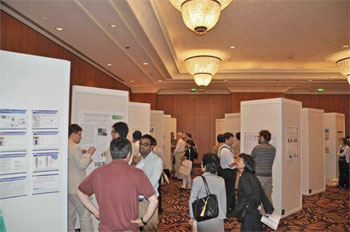ISACS 2 is continuing where ISACS 1 left off – more world-class scientists discussing the very best in cutting edge chemistry. This time it’s the turn of physical chemistry and nanoscience, set in the beautiful city of Budapest.
Moungi Bawendi opened the meeting with a fascinating talk on the science and technology of semiconductor nanocrystals, revealing that ‘it is all about the excitons.’ Hongkun Park then discussed his strategy for engineering light-matter interactions using nanoscale plasmonic and optoelectronic interfaces. Photochemistry was up next, with talks on methanol photodissociation on TiO2 surfaces and pi-sigma* excited states from Xueming Yang and Mike Ashfold. The afternoon talks covered electron transfer across interfaces (Martin Wolf), nanopatterning with molecules at interfaces (Steven De Feyter) and last but by no means least, nanoscale spectroscopy with optical antenna (Lukas Novotny). The day finished with a lively poster session and a members’ reception, where we welcomed many new members to the RSC.
Day two has been another jammed-packed event, with the morning covering single molecule optics for probing dynamics (Michel Orrit), single nano-objects spectroscopy (Vahid Sandoghdar), reactions of vibrationally excited molecules (Kopin Liu) and energy transfer at interfaces (Alec Wodtke). The afternoon session started on a more biophysical angle, with Toshio Yanagida discussing single molecule nanobioscience and Haw Yang talking about quantum dots as nanoscale local temperature sensors for measuring the temperature inside cells. The focus then switched to femto- and attosecond photoelectron experiments (Daniel Neumark) before David Clary closed the day’s session with his general procedure for predicting the kinetics and dynamics of polyatomic molecules.
ISACS 3 is due to take place next week, 20th – 23rd July, in the spectacular venue of Hong Kong and will take a look at the challenges in inorganic and materials chemistry.
ISACS 2 takes Budapest by storm
16 Jul 2010












